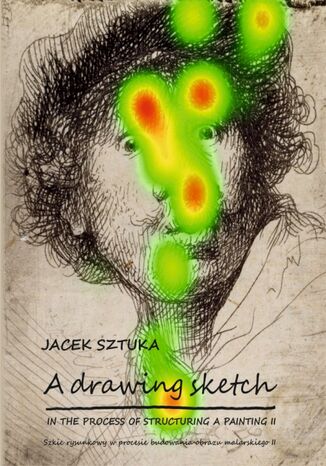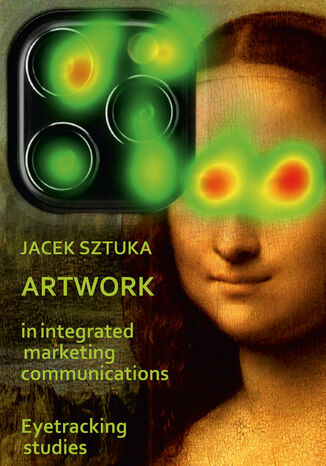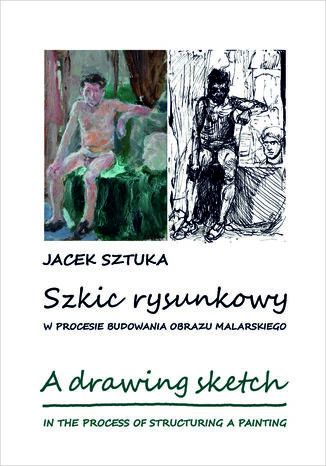Категорії
Електронні книги
-
Бізнес та економіка
- Біткойн
- Ділова жінка
- Коучинг
- Контроль
- Електронний бізнес
- Економіка
- Фінанси
- Фондова біржа та інвестиції
- Особисті компетенції
- Комп'ютер в офісі
- Комунікація та переговори
- Малий бізнес
- Маркетинг
- Мотивація
- Мультимедійне навчання
- Нерухомість
- Переконання та НЛП
- Податки
- Соціальна політика
- Порадники
- Презентації
- Лідерство
- Зв'язки з громадськістю
- Звіти, аналізи
- Секрет
- Соціальні засоби комунікації
- Продаж
- Стартап
- Ваша кар'єра
- Управління
- Управління проектами
- Людські ресурси (HR)
-
Для дітей
-
Для молоді
-
Освіта
-
Енциклопедії, словники
-
Електронна преса
- Architektura i wnętrza
- Безпека життєдіяльності
- Biznes i Ekonomia
- Будинок та сад
- Електронний бізнес
- Ekonomia i finanse
- Езотерика
- Фінанси
- Особисті фінанси
- Бізнес
- Фотографія
- Інформатика
- Відділ кадрів та оплата праці
- Для жінок
- Комп'ютери, Excel
- Бухгалтерія
- Культура та література
- Наукові та академічні
- Охорона навколишнього середовища
- Впливові
- Освіта
- Податки
- Подорожі
- Психологія
- Релігія
- Сільське господарство
- Ринок книг і преси
- Транспорт та спедиція
- Здоров'я та краса
-
Історія
-
Інформатика
- Офісні застосунки
- Бази даних
- Біоінформатика
- Бізнес ІТ
- CAD/CAM
- Digital Lifestyle
- DTP
- Електроніка
- Цифрова фотографія
- Комп'ютерна графіка
- Ігри
- Хакування
- Hardware
- IT w ekonomii
- Наукові пакети
- Шкільні підручники
- Основи комп'ютера
- Програмування
- Мобільне програмування
- Інтернет-сервери
- Комп'ютерні мережі
- Стартап
- Операційні системи
- Штучний інтелект
- Технологія для дітей
- Вебмайстерність
-
Інше
-
Іноземні мови
-
Культура та мистецтво
-
Шкільні читанки
-
Література
- Антології
- Балада
- Біографії та автобіографії
- Для дорослих
- Драми
- Журнали, щоденники, листи
- Епос, епопея
- Нарис
- Наукова фантастика та фантастика
- Фельєтони
- Художня література
- Гумор, сатира
- Інше
- Класичний
- Кримінальний роман
- Нехудожня література
- Художня література
- Mity i legendy
- Лауреати Нобелівської премії
- Новели
- Побутовий роман
- Okultyzm i magia
- Оповідання
- Спогади
- Подорожі
- Оповідна поезія
- Поезія
- Політика
- Науково-популярна
- Роман
- Історичний роман
- Проза
- Пригодницька
- Журналістика
- Роман-репортаж
- Romans i literatura obyczajowa
- Сенсація
- Трилер, жах
- Інтерв'ю та спогади
-
Природничі науки
-
Соціальні науки
-
Шкільні підручники
-
Науково-популярна та академічна
- Археологія
- Bibliotekoznawstwo
- Кінознавство / Теорія кіно
- Філологія
- Польська філологія
- Філософія
- Finanse i bankowość
- Географія
- Економіка
- Торгівля. Світова економіка
- Історія та археологія
- Історія мистецтва і архітектури
- Культурологія
- Мовознавство
- літературні студії
- Логістика
- Математика
- Ліки
- Гуманітарні науки
- Педагогіка
- Навчальні засоби
- Науково-популярна
- Інше
- Психологія
- Соціологія
- Театральні студії
- Богослов’я
- Економічні теорії та науки
- Transport i spedycja
- Фізичне виховання
- Zarządzanie i marketing
-
Порадники
-
Ігрові посібники
-
Професійні та спеціальні порадники
-
Юридична
- Безпека життєдіяльності
- Історія
- Дорожній кодекс. Водійські права
- Юридичні науки
- Охорона здоров'я
- Загальне, компендіум
- Академічні підручники
- Інше
- Закон про будівництво і житло
- Цивільне право
- Фінансове право
- Господарське право
- Господарське та комерційне право
- Кримінальний закон
- Кримінальне право. Кримінальні злочини. Кримінологія
- Міжнародне право
- Міжнародне та іноземне право
- Закон про охорону здоров'я
- Закон про освіту
- Податкове право
- Трудове право та законодавство про соціальне забезпечення
- Громадське, конституційне та адміністративне право
- Кодекс про шлюб і сім'ю
- Аграрне право
- Соціальне право, трудове право
- Законодавство Євросоюзу
- Промисловість
- Сільське господарство та захист навколишнього середовища
- Словники та енциклопедії
- Державні закупівлі
- Управління
-
Путівники та подорожі
- Африка
- Альбоми
- Південна Америка
- Центральна та Північна Америка
- Австралія, Нова Зеландія, Океанія
- Австрія
- Азії
- Балкани
- Близький Схід
- Болгарія
- Китай
- Хорватія
- Чеська Республіка
- Данія
- Єгипет
- Естонія
- Європа
- Франція
- Гори
- Греція
- Іспанія
- Нідерланди
- Ісландія
- Литва
- Латвія
- Mapy, Plany miast, Atlasy
- Мініпутівники
- Німеччина
- Норвегія
- Активні подорожі
- Польща
- Португалія
- Інше
- Przewodniki po hotelach i restauracjach
- Росія
- Румунія
- Словаччина
- Словенія
- Швейцарія
- Швеція
- Світ
- Туреччина
- Україна
- Угорщина
- Велика Британія
- Італія
-
Психологія
- Філософія життя
- Kompetencje psychospołeczne
- Міжособистісне спілкування
- Mindfulness
- Загальне
- Переконання та НЛП
- Академічна психологія
- Психологія душі та розуму
- Психологія праці
- Relacje i związki
- Батьківство та дитяча психологія
- Вирішення проблем
- Інтелектуальний розвиток
- Секрет
- Сексуальність
- Спокушання
- Зовнішній вигляд та імідж
- Філософія життя
-
Релігія
-
Спорт, фітнес, дієти
-
Техніка і механіка
Аудіокниги
-
Бізнес та економіка
- Біткойн
- Ділова жінка
- Коучинг
- Контроль
- Електронний бізнес
- Економіка
- Фінанси
- Фондова біржа та інвестиції
- Особисті компетенції
- Комунікація та переговори
- Малий бізнес
- Маркетинг
- Мотивація
- Нерухомість
- Переконання та НЛП
- Податки
- Соціальна політика
- Порадники
- Презентації
- Лідерство
- Зв'язки з громадськістю
- Секрет
- Соціальні засоби комунікації
- Продаж
- Стартап
- Ваша кар'єра
- Управління
- Управління проектами
- Людські ресурси (HR)
-
Для дітей
-
Для молоді
-
Освіта
-
Енциклопедії, словники
-
Електронна преса
-
Історія
-
Інформатика
-
Інше
-
Іноземні мови
-
Культура та мистецтво
-
Шкільні читанки
-
Література
- Антології
- Балада
- Біографії та автобіографії
- Для дорослих
- Драми
- Журнали, щоденники, листи
- Епос, епопея
- Нарис
- Наукова фантастика та фантастика
- Фельєтони
- Художня література
- Гумор, сатира
- Інше
- Класичний
- Кримінальний роман
- Нехудожня література
- Художня література
- Mity i legendy
- Лауреати Нобелівської премії
- Новели
- Побутовий роман
- Okultyzm i magia
- Оповідання
- Спогади
- Подорожі
- Поезія
- Політика
- Науково-популярна
- Роман
- Історичний роман
- Проза
- Пригодницька
- Журналістика
- Роман-репортаж
- Romans i literatura obyczajowa
- Сенсація
- Трилер, жах
- Інтерв'ю та спогади
-
Природничі науки
-
Соціальні науки
-
Науково-популярна та академічна
-
Порадники
-
Професійні та спеціальні порадники
-
Юридична
-
Путівники та подорожі
-
Психологія
- Філософія життя
- Міжособистісне спілкування
- Mindfulness
- Загальне
- Переконання та НЛП
- Академічна психологія
- Психологія душі та розуму
- Психологія праці
- Relacje i związki
- Батьківство та дитяча психологія
- Вирішення проблем
- Інтелектуальний розвиток
- Секрет
- Сексуальність
- Спокушання
- Зовнішній вигляд та імідж
- Філософія життя
-
Релігія
-
Спорт, фітнес, дієти
-
Техніка і механіка
Відеокурси
-
Бази даних
-
Big Data
-
Biznes, ekonomia i marketing
-
Кібербезпека
-
Data Science
-
DevOps
-
Для дітей
-
Електроніка
-
Графіка / Відео / CAX
-
Ігри
-
Microsoft Office
-
Інструменти розробки
-
Програмування
-
Особистісний розвиток
-
Комп'ютерні мережі
-
Операційні системи
-
Тестування програмного забезпечення
-
Мобільні пристрої
-
UX/UI
-
Веброзробка, Web development
-
Управління
Подкасти
A Drawing Sketch. In the Process of Structuring a Painting II
To look for answers to some of the above questions, Author decided to conduct research using an eye tracker that records eyeballs movement. Author tested thirty respondents (and heself). The research sample here consisted of young people and experienced artists. Each subject observed a sequence of images. These images were: a value sketch and a color sketch by the subject, a group sketch in which he (i.e. the subject) most often participated in drawing, and a sketch by another author. Each perceived image usually lasted for the previously mentioned six seconds. Then Author asked the subjects to indicate the area in their drawing sketch that they considered subjectively most important. The results of these studies show that the author of a drawing sketch often (although with varying accuracy) actually fixates his gaze on the area that he declares is the most important. When observing a drawing sketch (made collectively), the author's attention is rarely drawn to his own (i.e. drawn by himself) fragment (regardless of whether the respondent is a professional or an amateur). The perception of one's own valuable (although not always black and white) drawing sketch and a color sketch are completely different.
Artwork in Integrated Marketing Communications. Eyetracking Studies
In considering the relationship of the artwork to integrated marketing communications, it is worth addressing the hard-to-grasp concept of art itself and the work of art associated with it. Seeking answers to the fundamental question of the role of art and its creations in visual marketing communications, we must be aware of what an artwork is and how to distinguish it from other visual communications used in today's advertising and marketing. The fundamental problem of the research was to compare the ways of looking at authentic works of art as seen in the marketing space. Several works of artists, such as Leonardo da Vinci, Piet Mondrian, Rafael Santi, Vincent van Gogh and Salvador Dali that have been recognized over the centuries as unquestionably outstanding, impressive in both craftsmanship and depth of artistic expression, have been selected for the analysis. First two chapters of the work are an attempt to grasp the concept of an artwork and its meaning for the artist and the recipients, and at the same time - we are exposed to the difficulty of formulating a proper definition of an artwork. Then, in chapter three, a brief history of some of the greatest works of previously mentioned artists is presented. The following chapters are a considerations weather an artist's work, born of their "creative love", could be exhibited as a "product for sale", and if not too often great artifacts were able to become an object of trade only after the death of their authors. Chapter six exposes the ethical dilemmas regarding putting the images of the greatest masterpieces on promotional tools, a phenomenon which occurs also in the most famous museums in the world. The discussed integrated marketing communications in chapter seven make an introduction for consideration of the benefits of reproducing famous artworks onto advertising gadgets in chapter eight. Chapter nine is an in-depth analysis of the results of the eyetracking study conducted, and consists pictures of original artworks, as well as their reproductions on various items, and the way they were perceived by the eyetracking study respondents. The purpose of the study was to test the following theses: Does the power of an artwork viewed on a museum wall continue in its reproductions on promotional items, i.e. for example, on so-called advertising gadgets? Does the emotional impact of the image presented on the promotional materials still persist causing attention to be focused, or does audience's attention dissipate? If so, to what extent does it dissipate and what determines it?
Szkic rysunkowy w procesie budowania obrazu malarskiego
„Jacek Sztuka odsłania w monografii warsztat dochodzenia twórcy do ostatecznej wersji dzieła. (…) Z jednej strony prezentowane szkice są niejako scenopisami przyszłych realizacji, z drugiej anektują uczestnika by wraz z poszukującym rozwiązań autorem stał się „pielgrzymem” spełniającym się w drodze poszukiwań. Dr hab. Janusz Pacuda, (fragmenty recenzji). (…) otwarcie nowej karty szkicownika nie oznacza wcale zaczynania czegoś „od początku”. (…) Nowy szkic to tak jak powrót do jakiegoś świata, w którym ukonstytuowały się już właściwie wszystkie konkretne zależności i uwarunkowania. Pewne ścieżki w tym labiryncie kresek okazały się prowadzić „do nikąd”. Określone formy stały się już jakby oswojone czy „sprawdzone”, inne ulubione lub nawet powtarzalne. „Bohaterowie” zostali już wybrani i grają swoje role, a któryś z nich gra już rolę główną, a inni stanowią tło. Jacek Sztuka, (fragmenty monografii)



